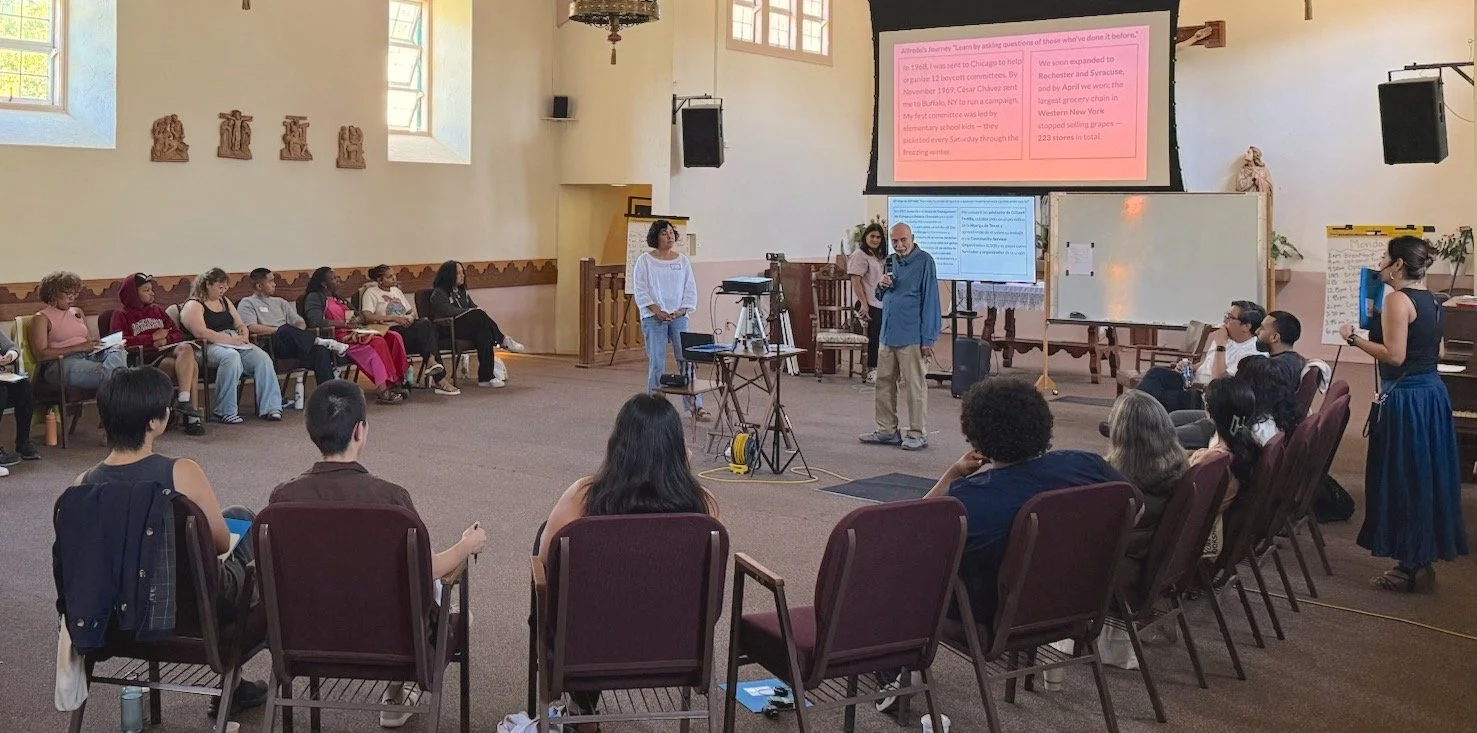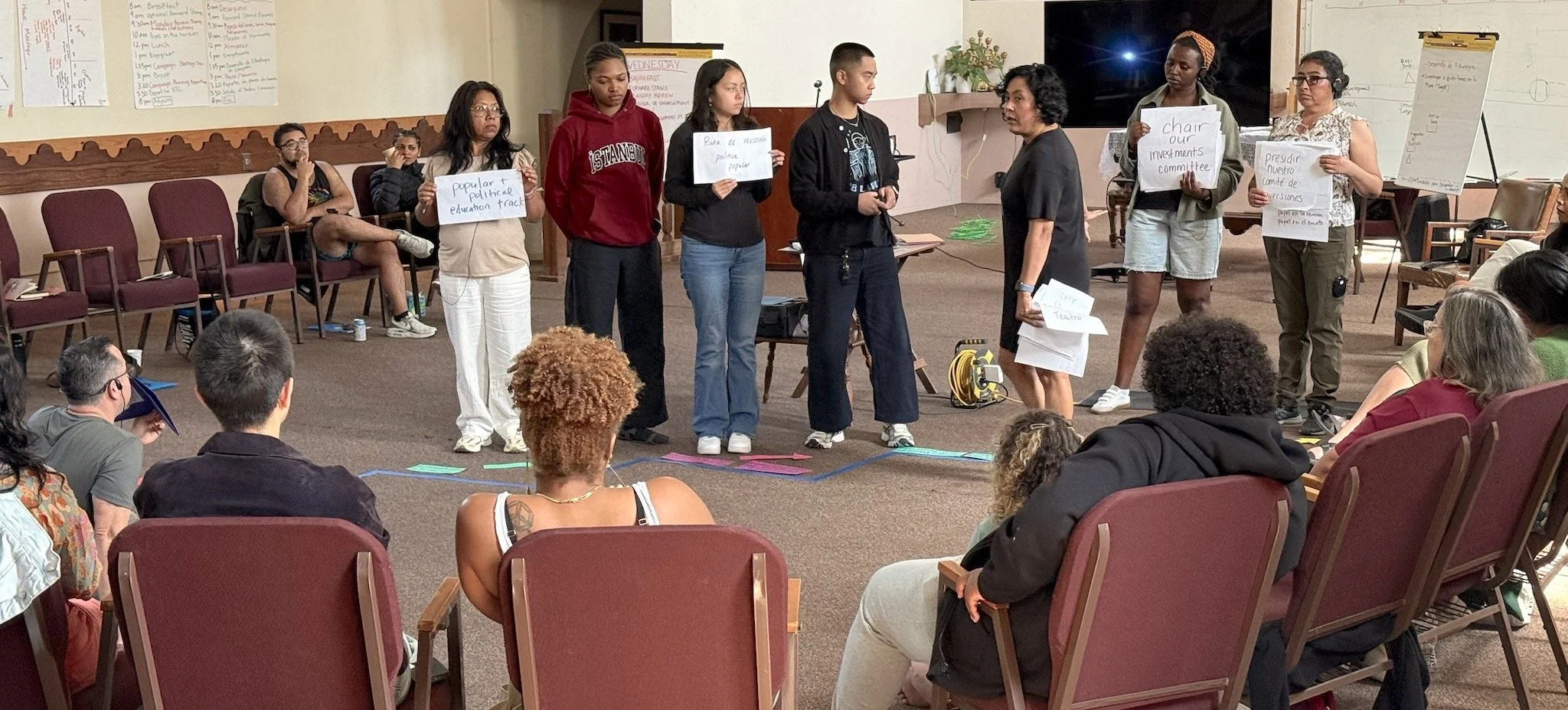Spadework Mid-Program Highlights
In late August, Spadework’s 2025 cohort gathered in San Juan Bautista, CA for our mid-program convening. Over five days, we traced movement lineage, brought stories to life, and practiced tools of leadership development as we envisioned the world we’re building toward. What emerged were lessons not only for the cohort, but for all of us asking: What does resuscitating the heart of organizing require?
Lesson 1: Lineage matters — and so do warnings
“Learn by asking questions of those who’ve done it before”
We were joined by a veteran United Farm Workers organizer who shared the story of the Community Service Organization (CSO). The CSO showed what’s possible when everyday people organize for power: 34 chapters and 10,000 members in just 15 years.
But the story also carried a warning. When organizations drift too far from the everyday struggles of their base and fail to build structures for new leaders, the horizon fades. CSO chapters began shifting focus to different issues, members stopped meeting, and the organization weakened.
To carry this history forward, El Teatro Campesino guided the cohort in embodying the CSO story. Participants stepped into the roles of Fred Ross, César Chávez, Dolores Huerta, and the everyday people who organized their neighbors. Teatro reminded us: culture is not decoration, it is resistance. It is a structured practice for building collective identity, surfacing wisdom, and developing leaders across generations.
Lesson 2: Vision drifts without structure
“You are here”
For Horizon Visioning, participants imagined thriving futures: clean air, open borders, reunited families, restored nature, healthcare and education for all. They told slice-of-life stories 150 years ahead — not of survival, but of flourishing.
Yet vision alone isn’t enough. Vision inspires, but structure makes it real. In an interactive case study, we looked at the Oakland Freedom Project’s Ladder of Engagement as a live example of how structure sustains vision. The Ladder lays out clear steps for members to grow from first contact into deeper responsibility and decision-making roles. It helps us distinguish busy work from leadership development and ensures that leadership growth is visible, shareable, and collective.
The lesson: without structure, visions drift. With the Ladder as a tool, organizations can align everyday practice with a long-haul horizon.
Lesson 3: Leadership is transformation
“How do you know?”
During Leadership Development, participants reflected on members who’ve been with their organizations for 5+ years. What clicked for them? What helped them stay? Again and again, the answer was transformation: people grew when they saw themselves not only as members, but as leaders with agency inside a collective bigger than their immediate needs.
Transformation doesn’t happen by chance — it happens through practice and intentional development. The ABC tool helps organizers assess their base, see everyone as a potential leader, and map out growth pathways. Participants recognized how transformation is sustained when organizations pair this kind of rigor with deep relationships and collective accountability.
Lesson 4: Practice builds power
The heart of organizing beats through practice. Tools like the Ladder and ABC, practices like Teatro, and supports like trainers, mentors, rovers, and co-participants make that practice possible. Together, they turn struggle into strategy and memory into movement, transforming organizations into spaces of alternative learning and vehicles of people power.
So, what does resuscitating the heart of organizing ask of us?
It asks that we lean into lineage, vision, and leadership — and that we practice with rigor, supported by tools, culture, and community. Our cohort now carries these lessons back to their organizations, to experiment, to share, and to build toward systemic change.
Con cariño,
The Spadework team





